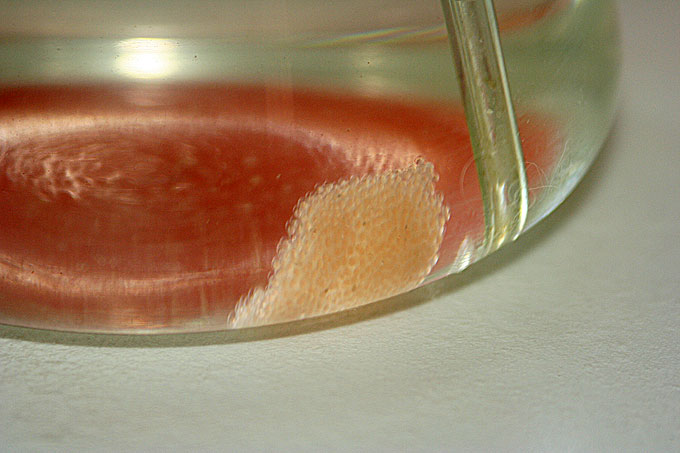The hobbyist marine fish breeding world just took another step forward today. We may be well on our way towards adding another new species to our captive bred list – we have a report of what appears to be the first recorded captive spawning of the Black Margin Dottyback, Pseudochromis tapeinosoma.
Jim Welsh, an active hobbyist breeder with the Marine Breeding Initiative, heard the call last month when we emoted “hopefully this pair [of Black Margin Dottybacks] goes to a breeder” as we showed off LiveAquaria’s debut offering of this rare black margin dottyback to the US aquarium hobby. Jim snagged the first pair we knew about, and also got another pair in a subsequent offering.

I shared my experiences with Jim, covering both my multiple failed attempts at working with the Orange Tailed Dottyback (Pseudochromis coccinicauda) and my near success with the Blue Bar Dottyback (Ps. cyanotaenia) which I had fully documented in a “Breeding Journal“. It’s amazing that when I look at Jim’s own breeding journal for the Black Margin Dottyback, I see similarities (i.e. the setup of a pass-through with PVC through the divider) and it’s readily apparent that my own comments and suggestions to him paid off, decreasing his risks and rapidly bringing him to an initial success point.

Of course, my own breeding attempts were informed by Dr. Matt Wittenrich’s book, The Breeder’s Guide to Marine Fishes, which first taught me about the ability of dottybacks in this species-complex, which are protogynous, to actually revert sex to female from the terminal male sex. We don’t know if Ps. tapeinosoma can do this yet, but based on it’s relation to the other species, it seems likely.
What’s even more amazing about this breeding event is that the pair was not in direct physical contact with each other. Look at the above setup – there is a clear divider, and the pair spawned while separated. Jim reports finding the egg ball outside the female’s PVC. While Jim initially thought this would be a failed spawn, I was quick to remember that pugnacious freshwater fish are sometimes mated through eggcrate dividers to prevent mates killing or damaging each other. It turns out that despite several inches of distance, if Jim can successfully artificially incubate the egg ball he collected, he may already be well on his way towards a fish hatch of this species – it seems that there are many fertilized eggs in the nest!

I’m confident in Jim’s ability to tackle this project, and if he chases it diligently he may well be the first to successfully breed this species (and claim a hard-to-obtain “species first” award in the MBI). I made it to 28 or so days in a white 5 gallon bucket sitting on my floor with the Blue Bar Dottyback – these larvae should prove to be pretty robust in a more appropriate rearing container with the most modern feeds available. Hopefully,the next time I post about this species, it’s to announce another successful first at the hands of a hobbyist breeder. Be sure to follow Jim’s work with Black Margin Dottyback Pair #1 and Black Margin Dottyback Pair #2 on the MBI site for all the ups and downs of this exciting project.



